American Buttercream
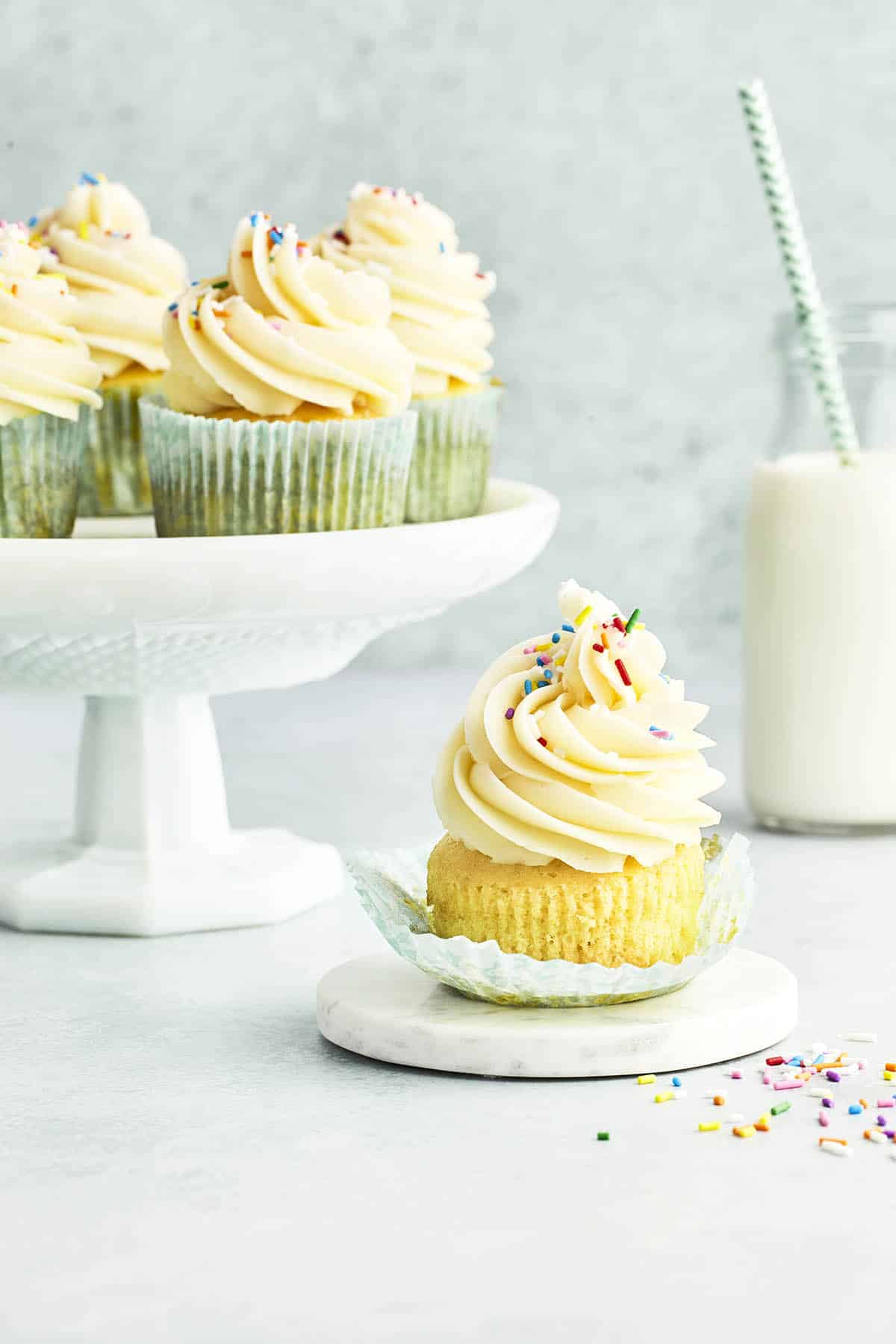
This American buttercream recipe is my absolute favorite! It tastes similar to storebought, but it’s not as sweet and is made with real ingredients.
There are several different types of vanilla frosting, but American buttercream is one of the easiest and most popular. Other types of buttercream include Swiss meringue buttercream, Italian meringue buttercream, German buttercream, and Russian buttercream. While each has its unique flavor and texture, American buttercream is known for being sweet, creamy, and easy to work with.
Because it’s made with a high ratio of powdered sugar to butter, American buttercream frosting is especially great with recipes that aren’t as sweet as this Earl Grey yogurt cake. Lemon desserts like this lemon buttermilk cake or these lemon shortbread cookies are also a beautiful match with this basic vanilla frosting recipe.
In this comprehensive guide, I cover everything you need to know about making the perfect vanilla frosting, including choosing the best vanilla, how to store it, how to customize it, and more.
Jump to:
Why You’ll Love This Recipe
✔️ Vanilla frosting is so easy to make, even for inexperienced bakers.
✔️ You have complete control over the quality and ingredients.
✔️ This recipe is highly customizable.
Ingredients For American Buttercream
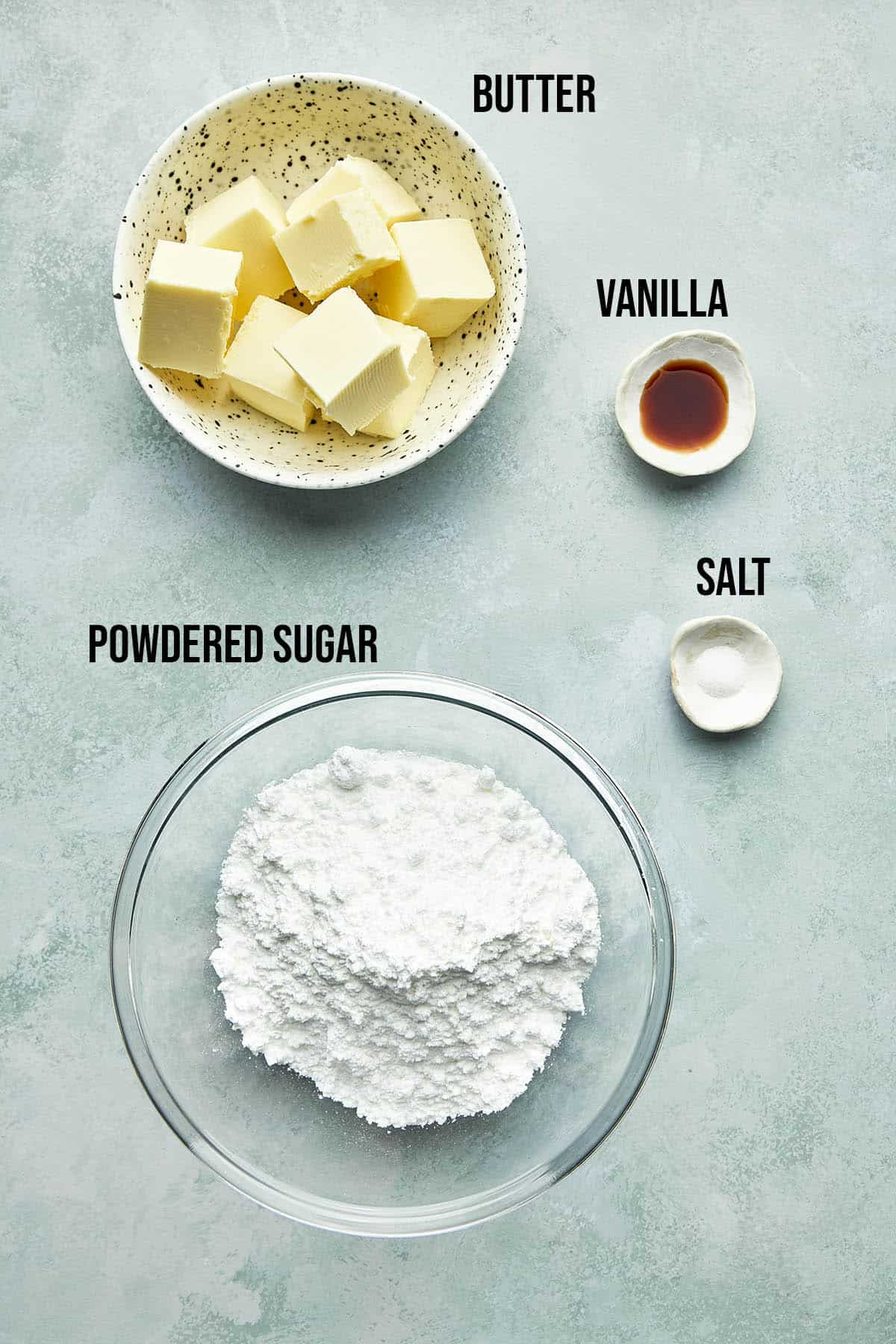
Ingredient Notes
- Butter: Adds melt-in-your-mouth texture and a rich taste that’s not overwhelming. I use salted butter in this recipe.
- Powdered Sugar: Also known as confectioner’s sugar, this fine, powdery sweetener is essential for a smooth buttercream. It dissolves easily, ensuring your frosting is lump-free and velvety. The added cornstarch in powdered sugar also helps to stabilize the buttercream, giving it a spreadable, consistent texture. Powdered sugar is key to a perfect, creamy finish, whether piping or spreading.
- Salt: Even though I use salted butter, I still like a touch of salt to balance the sweetness of the powdered sugar.
- Vanilla: This key ingredient comes in several forms – extract, paste, and beans. Vanilla extract is the most common and convenient, offering a classic flavor. Paste, thicker and filled with tiny seeds, provides a more intense vanilla taste and speckled appearance. Vanilla beans, though more labor-intensive, deliver the richest flavor. Each type brings a unique character to your buttercream, enhancing it with a warm, aromatic depth. Choose based on the flavor intensity you’re after and the visual effect you want to achieve.
It’s important to note that when making substitutions in recipes, the texture and flavor may be slightly different. However, these substitutes are the best options to change the original recipe.
Ingredient Substitutions
- Butter: Unsalted butter with a pinch of salt and replace salted butter. For a dairy-free option, try vegan butter or margarine.
- Vanilla: Almond extract has a different flavor profile, but it’s a delicious replacement for vanilla. Try adding half a teaspoon at a time until you reach your desired taste.
Recipe Variations
- Adjusting Consistency: For a thinner frosting, gradually add milk or cream, a teaspoon at a time, until you reach the desired consistency. This is ideal for a lighter spread or a more delicate piping. For thicker frosting, add more powdered sugar, a little at a time. This is perfect for when you need the frosting to hold its shape better for intricate designs or when working in warmer conditions. Remember, small adjustments can make a big difference, so it’s best to add gradually and mix thoroughly between additions.
- Citrus Zest: Add lemon, lime, or orange zest for a fresh, bright flavor. This works well for summer cakes or to cut through the sweetness.
- Cocoa Powder: Mix up to ¼ cup (20 g) of cocoa powder to make a chocolate buttercream. You may have to adjust the powdered sugar to balance the bitterness of the cocoa.
- Cream Cheese: Swap some cream cheese instead of butter to add a tangy flavor. This variation pairs well with carrot cakes and red velvet cakes.
- Dulce de Leche or Caramel Sauce: Mix in up to ⅓ cup (75 g) of dulce de leche or caramel sauce for a rich flavor. If you have an Instant Pot, try my recipe for Instant Pot dulce de leche. If you don’t have an Instant Pot, follow the same technique as my Instant Pot post with a slow cooker on low for 8 hours.
- Espresso Powder: Dissolve up to 1 teaspoon of espresso powder in a teaspoon or two of hot water and mix it in for a coffee-flavored buttercream, great with chocolate cakes. Do not feed to children before bedtime!
- Freeze-Dried Strawberries or Raspberries: Begin with 2 tablespoons (about 8 g) of freeze-dried strawberry or raspberry powder and adjust to taste.
- Jam: Use roughly 2 to 3 tablespoons (30 to 45 g) of jam. Consider pureeing if it’s chunky.
- Lemon Curd: Start with 2 to 3 tablespoons (30 to 45 g). Adjust for flavor and consistency. I’ve been making this microwave lemon curd for years. It takes about 20 minutes, with only five or six minutes of cooking time, and it is freaking delicious!
- Mini Chocolate Chips: Start with ¼ to ⅓ cup (about 45 to 60 grams) of mini chocolate chips. This amount is enough to add texture without hindering the frosting’s spreadability. You cannot pipe this version unless you are using a large round tip or any other larger piping tip.
- Peanut Butter: Add up to ½ cup (113 g) of creamy peanut butter for a peanut butter buttercream. This is a hit with both chocolate and vanilla cakes.
- Shortening: For a firmer texture, substitute ¼ cup (56 g) of your favorite shortening for butter. This can be useful if you are frosting cakes in the summer when it’s hot outside. The shortening doesn’t affect the flavor and helps prevent the frosting from melting in the heat.
- Spices: For cinnamon or nutmeg, begin with ¼ to ½ teaspoon. This can be adjusted based on your flavor preferences. Spices are potent, so it’s best to start with a smaller amount and add more after tasting. Try my recipe for homemade chai spice to make a chai-spiced frosting (this would be terrific on my pumpkin bread with cream cheese frosting).
- Sprinkles: Mix in 2 to 4 tablespoons (30 to 60 grams) of sprinkles. Add them closer to serving time to prevent color bleeding.
- Toffee Bits: Add ¼ to ⅓ cup (about 45 to 60 grams) of Skor bits for a toffee flavor and crunch.
Use the JUMP TO RECIPE button at the top of this post, or scroll to the bottom to see the PRINTABLE recipe card with ingredient measurements and complete instructions.
How To Make American Buttercream
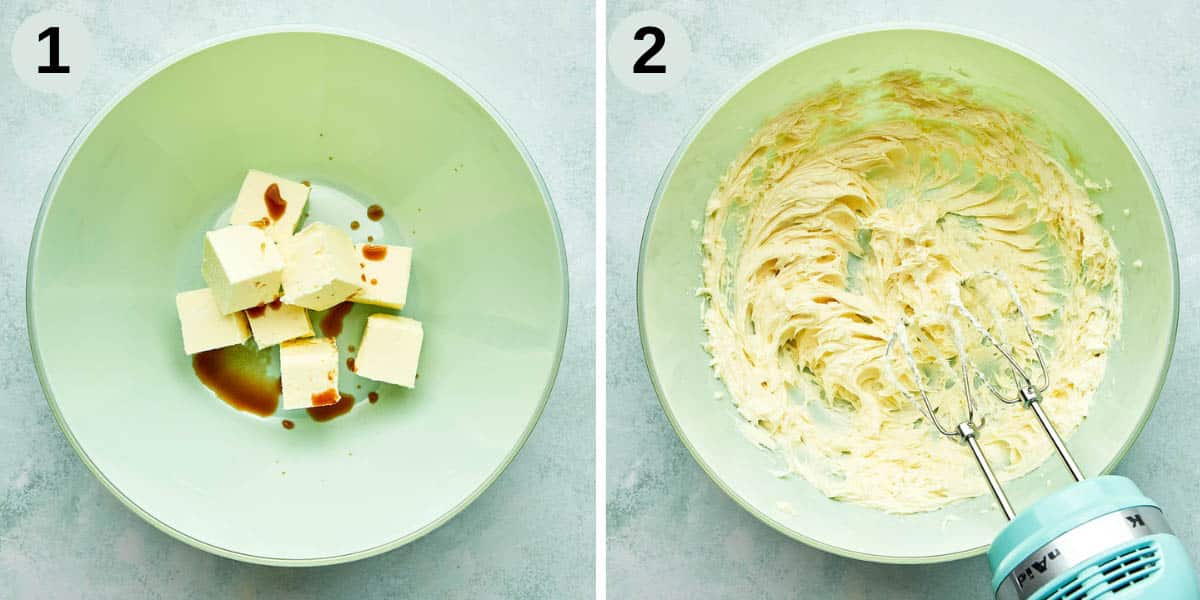
STEP 1: Place the butter, vanilla, and salt in a mixing bowl.
STEP 2: Use an electric mixer to beat the butter until creamy and smooth, about 1 to 2 minutes.
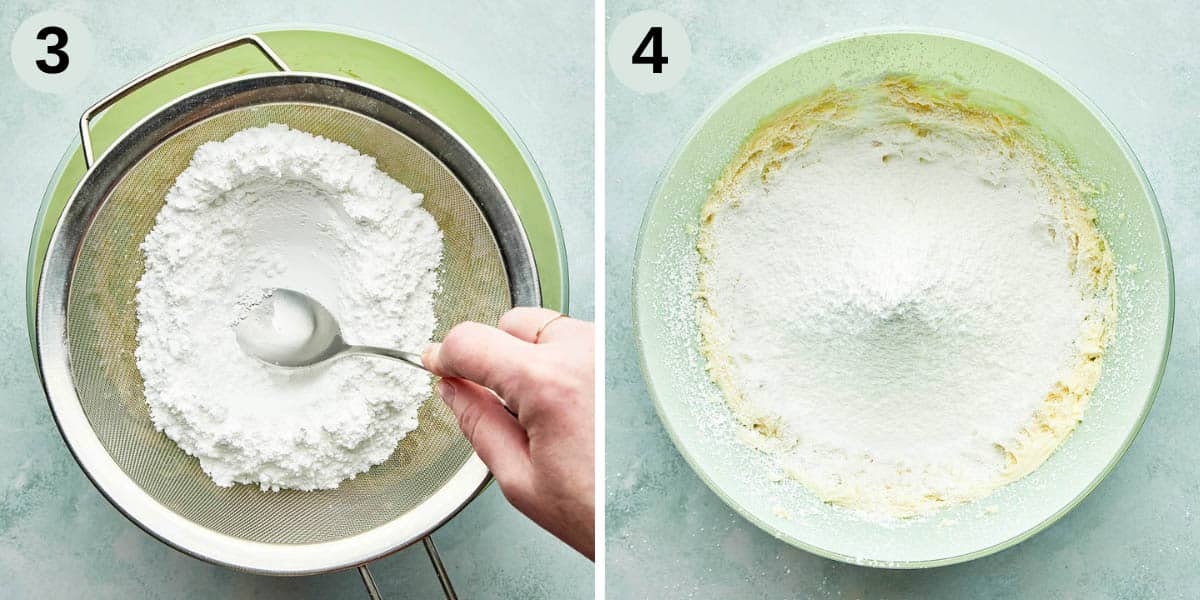
STEP 3: Sift the powdered sugar into the bowl through a fine mesh sieve. I like to press the powdered sugar through the sieve using the back of a spoon.
STEP 4: Sifting the powdered sugar helps prevent lump frosting.
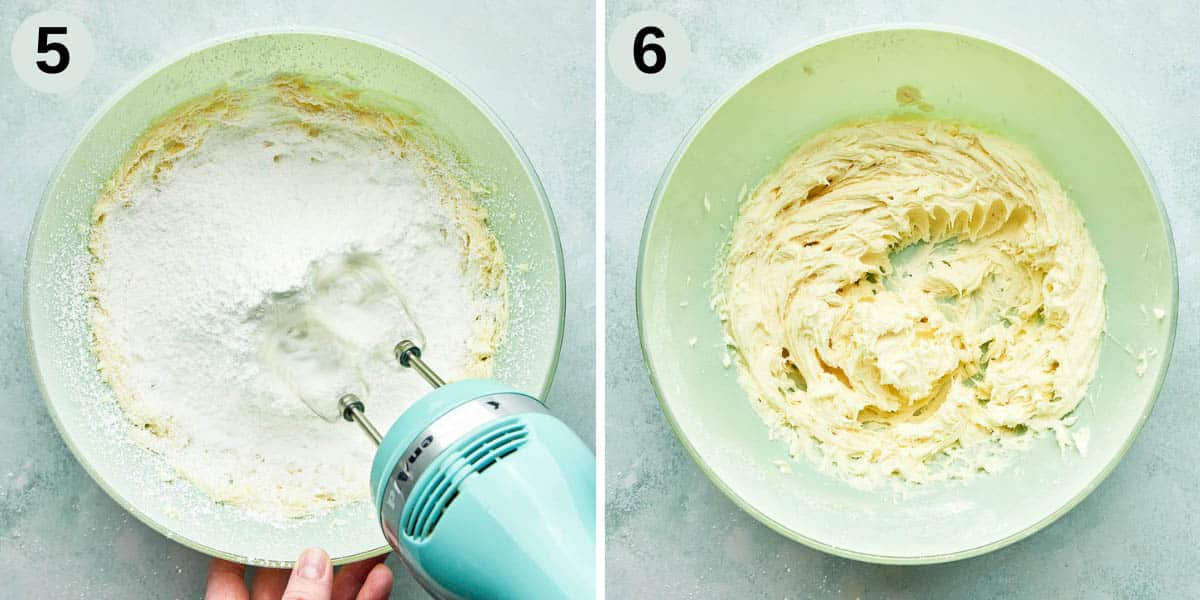
STEP 5: Mix the sugar into the butter at low speed until just combined.
STEP 6: Increase the speed of the mixer and whip the buttercream until it becomes light and fluffy, about one minute. Add in any variations you like here. Use immediately or store for later.
Expert Tips
1. For easier mixing, use softened butter.
2. Cream the butter for at least one minute (two minutes is better). This helps make the frosting light and fluffy.
3. If you like a less stiff buttercream, add milk or cream by the ½ teaspoon until you reach the consistency you like.
Recipe Notes
- This recipe doubles and triples well.
- If your butter is too cool to mix smoothly, heat it in the microwave in 10-second increments at 50% power. It’s ready when it squishes slightly when pressed with a fingertip.
- To prevent lumps, sift the powdered sugar into the butter.
- When experimenting with additional flavors or colors, add them gradually to avoid overpowering the frosting.
- You can store this powdered sugar frosting in an airtight container for later use. Plastic or glass containers are both good options. It can be kept in the fridge for up to two weeks or in the freezer for up to two months. You can leave buttercream icing at room temperature for up to two days; however, keep it away from direct sunlight or heat.
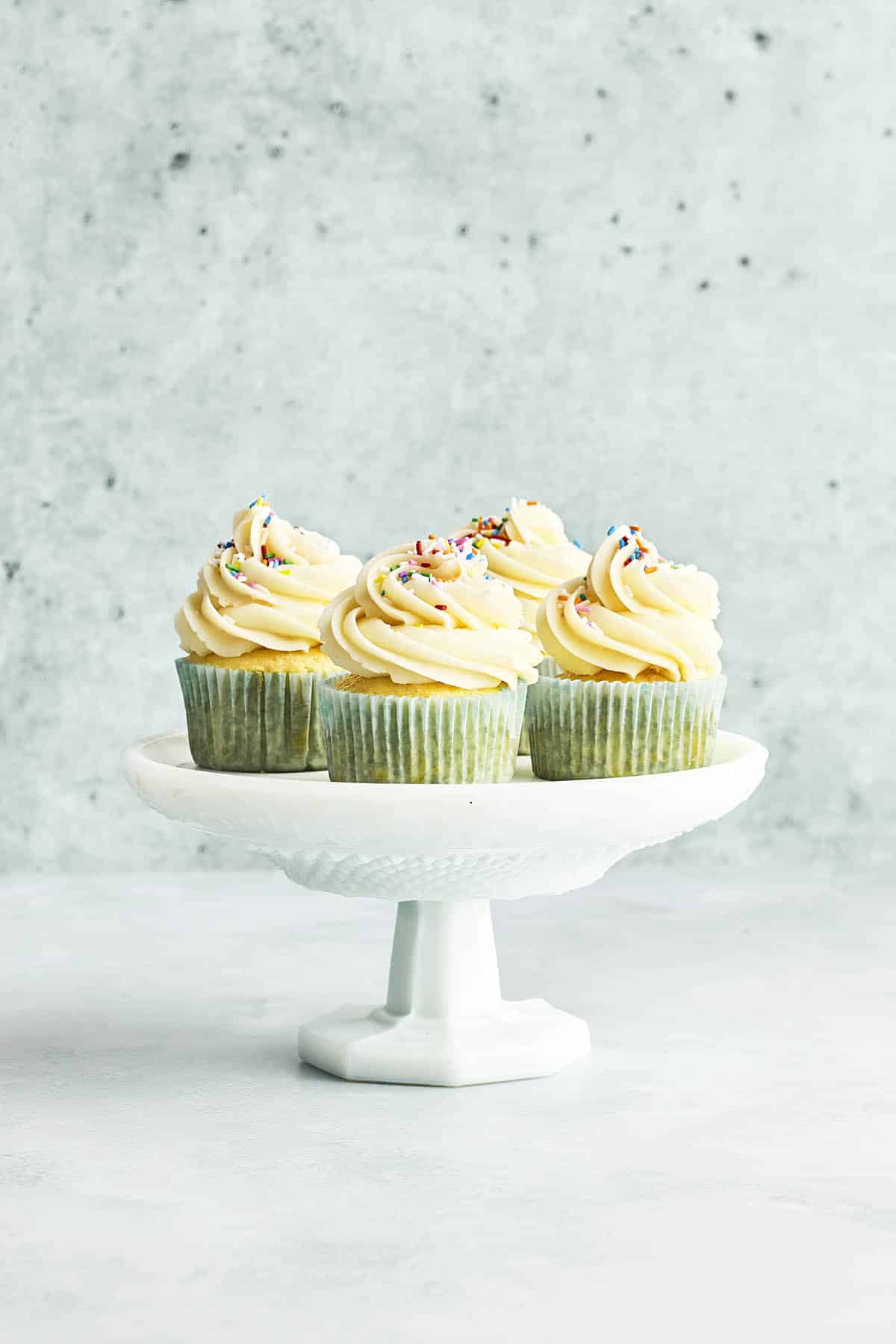
The Best Vanilla For American Buttercream
Vanilla is expensive. Ideally, we would all use pure, high-quality vanilla extract or whole vanilla beans, but this is not always true. The best vanilla for American buttercream is the one you have on hand or can afford.
- Artificial Vanilla Extract: Ideal for everyday baking with its familiar vanilla taste. It’s my go-to for recipes like vanilla cupcakes, offering a classic flavor.
- Clear Artificial Vanilla Extract: Perfect when you need the vanilla flavor without the color.
- Pure Vanilla Extract: A luxury ingredient, pure vanilla extract is perfect for recipes where vanilla is the highlight. Use it to bring a premium vanilla flavor to your buttercream.
- Vanilla Bean Paste: Substitute equal amounts of vanilla bean paste for extract. It offers excellent taste and visual appeal with its specks of vanilla seeds.
- Vanilla Powder: Less common but effective, vanilla powder is alcohol-free and made from dried and ground vanilla beans. Add ¼ teaspoon at a time to taste.
- Whole Vanilla Beans: Use ⅓ of a vanilla bean for rich flavor. Split it, scrape out the seeds, and mix them into the butter. Start with a small amount and add more for a stronger flavor.
Covering Different Cake Sizes
This recipe yields about 1 ½ cups of frosting.
- Cupcakes: Makes enough for a large piped swirl on six standard cupcakes or a light spread on 12.
- Single-Layer Cake: Covers the top and sides of an 8-inch round cake.
- Naked-Style 2-Layer Cake: Enough for a layer between the cakes and a thin outer coat.
Remember, frosting coverage varies based on factors like measurement precision, added liquid, and piping tip size. Preferences for frosting amount differ, so I often double the batch and freeze any extra.
Crusting In American Buttercream
American buttercream can form a crust, a slightly harder layer on the surface, due to drying. This crusting is often preferred by decorators for its smooth, stable surface for additional frosting layers. To avoid crusting, cover the frosting with a damp cloth or plastic wrap until use, and apply it swiftly to your baked goods.
Use Homemade Vanilla Frosting With These Recipes
Did you make this American buttercream? Please rate the recipe and tell me how it went in the comments below. Also, stay in touch with me on Instagram, Facebook, and Pinterest to see more delicious food and recipes!
Printable Recipe Card
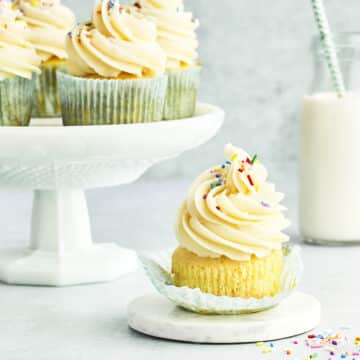
American Buttercream
Special Equipment
- Measuring cups and spoons or digital kitchen scale
- Large mixing bowl
- Hand or stand mixer
- Fine mesh sieve
- Spoon optional
Ingredients
- 1 cup butter, softened
- ½ teaspoon vanilla extract
- ⅛ teaspoon salt
- 2 cups powdered sugar
Instructions
- Place the butter, vanilla extract, and salt in a mixing bowl. Mix on low speed until just combined. Increase the speed of the mixer and cream the butter until smooth, about 1 to 2 minutes.
- Sift the powdered sugar through a sieve into the bowl of butter. I like to press the powdered sugar through the sieve using the back of a soup spoon. Mix on low speed until the butter and sugar are just combined.
- Increase the speed of the mixer and beat the buttercream until it becomes light and fluffy about 1 minute. Scrape down the sides of the bowl halfway through mixing. The frosting will be fairly thick. Add milk or cream by the ½ teaspoon, mixing well in between each addition, if you like a looser frosting. Use immediately, or store in the fridge or freezer for later.
Recipe Notes
- This recipe doubles and triples well.
- If your butter is too cool to mix smoothly, heat it in the microwave in 10-second increments at 50% power. It’s ready when it squishes slightly when pressed with a fingertip.
- To prevent lumps, sift the powdered sugar into the butter.
- When experimenting with additional flavors or colors, add them gradually to avoid overpowering the frosting.
- You can store this powdered sugar frosting in an airtight container for later use. Plastic or glass containers are both good options. It can be kept in the fridge for up to two weeks or in the freezer for up to two months. You can leave buttercream icing at room temperature for up to two days; however, keep it away from direct sunlight or heat.
Nutrition
Nutrition information is provided as a courtesy and is an estimate only. If accurate data is important to you, please verify it independently.
Cupcake Baking Tip
A weird/interesting thing happened when I first posted this recipe in 2010. I was baking cupcakes to go along with the buttercream in the photos. I baked the first dozen cupcakes at 350ºF (180ºC) until golden, about 22 minutes. While in the oven, I read the recipe and realized I was supposed to bake them at 325ºF (160ºC). I reduced the temperature in a panic for the second batch of cupcakes, and here’s what happened:
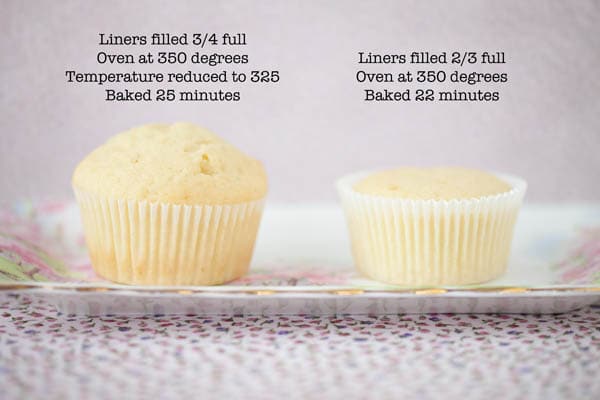

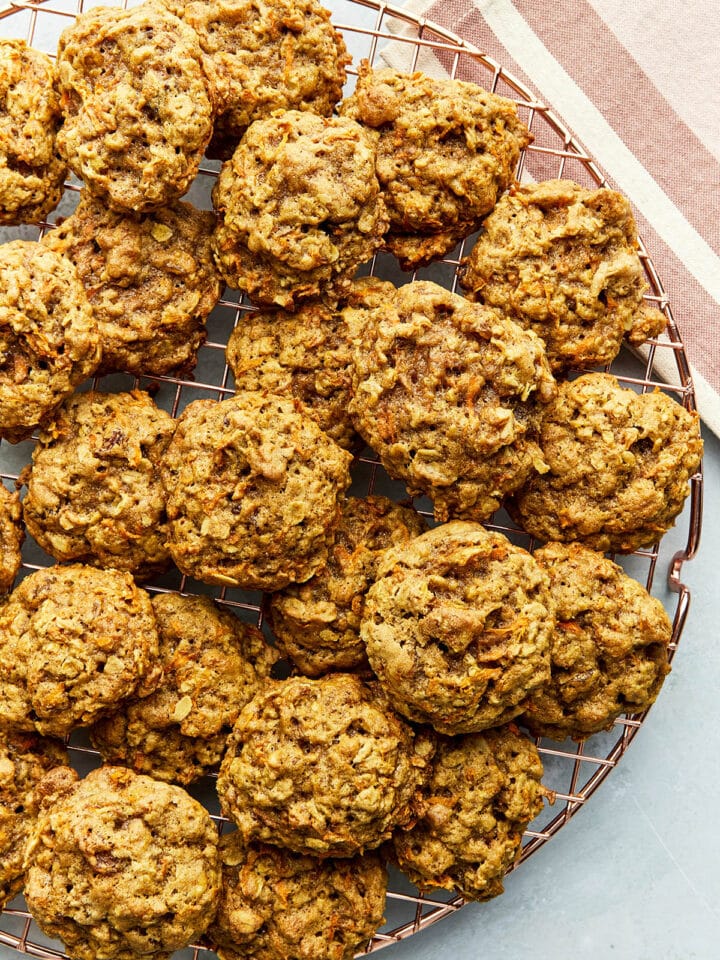
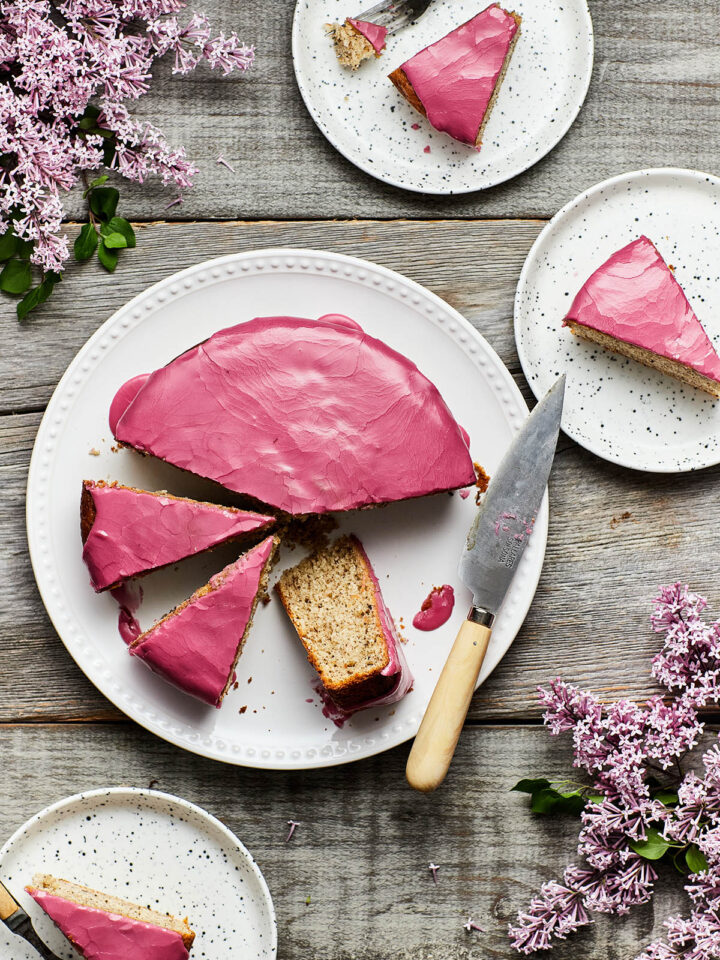
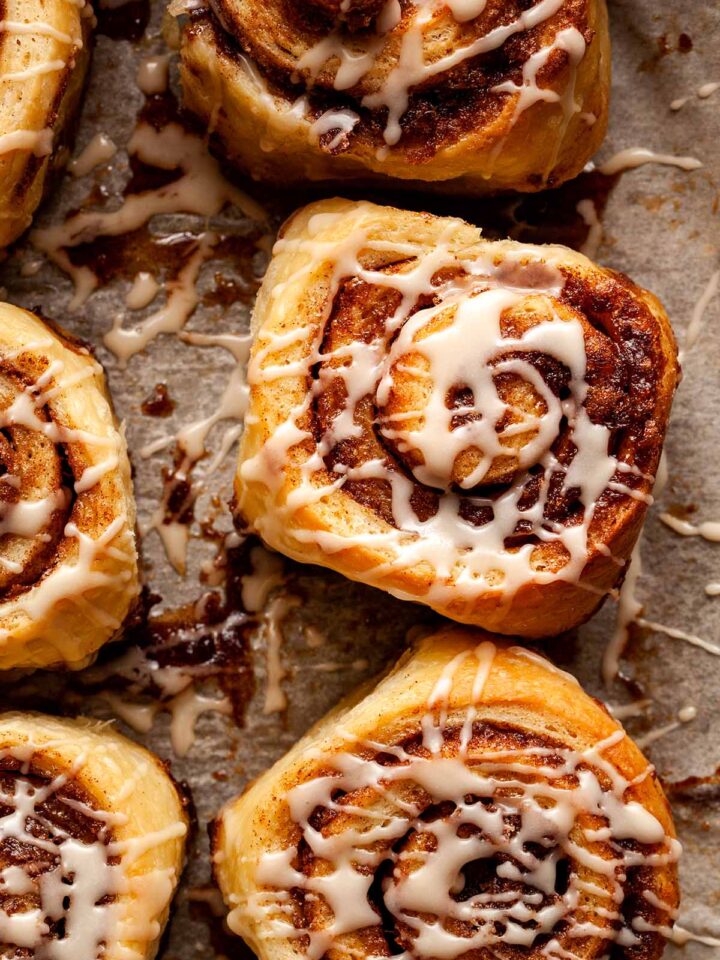
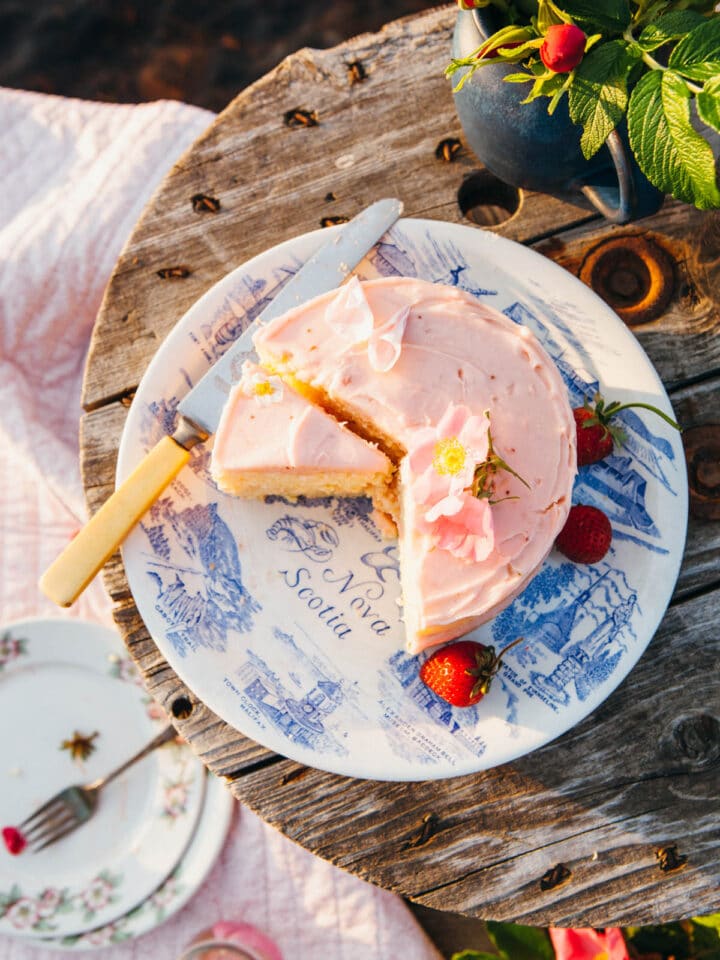
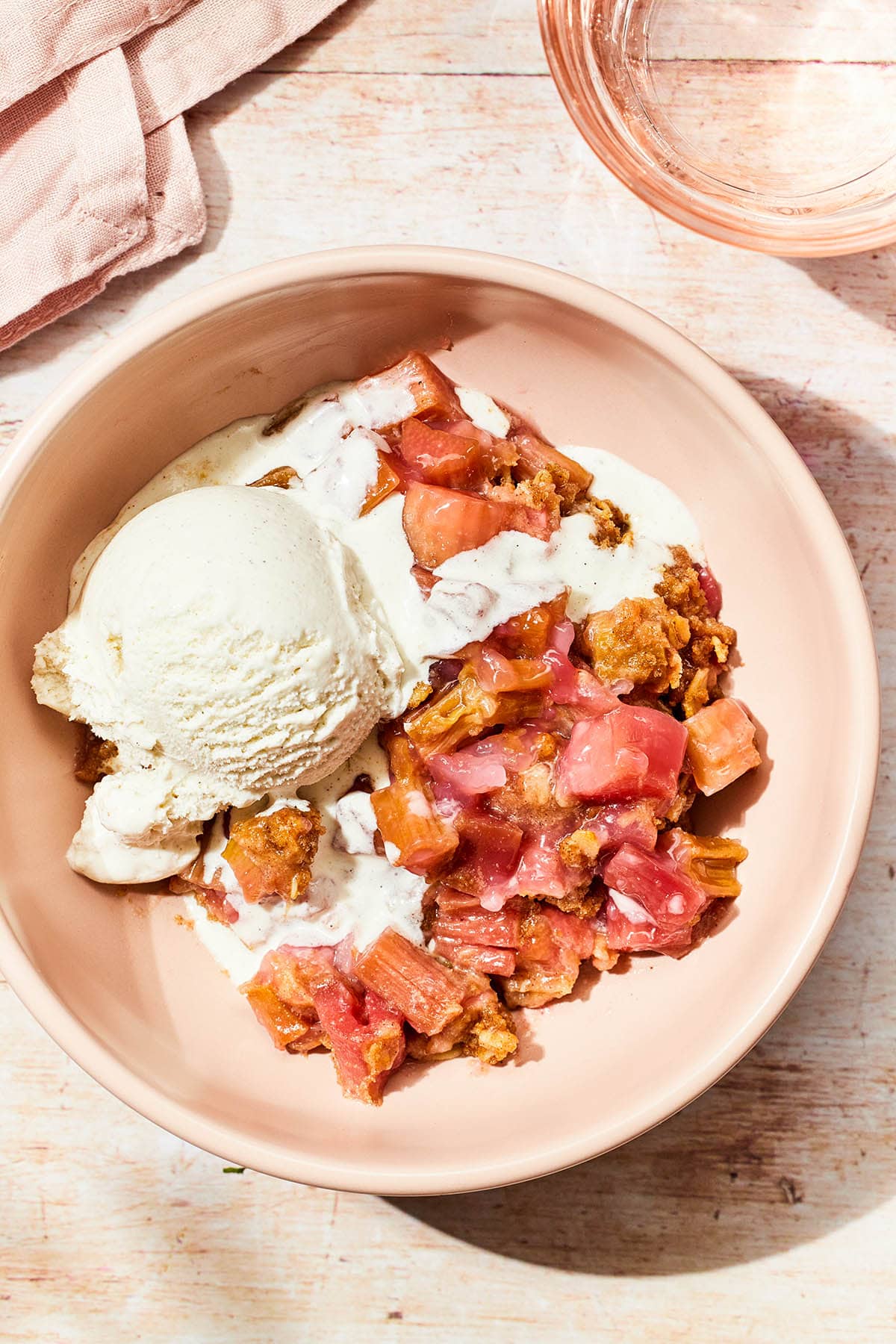
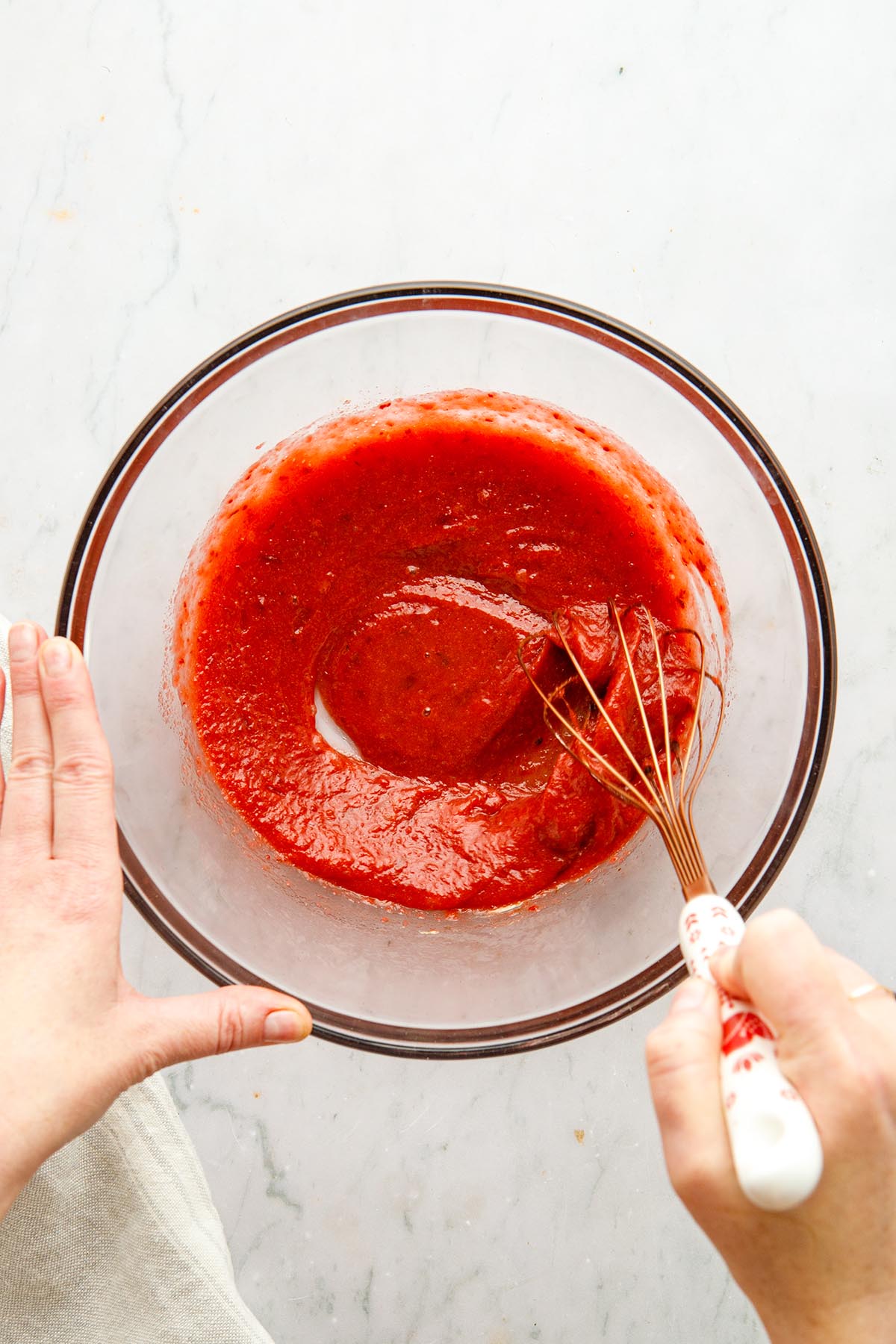
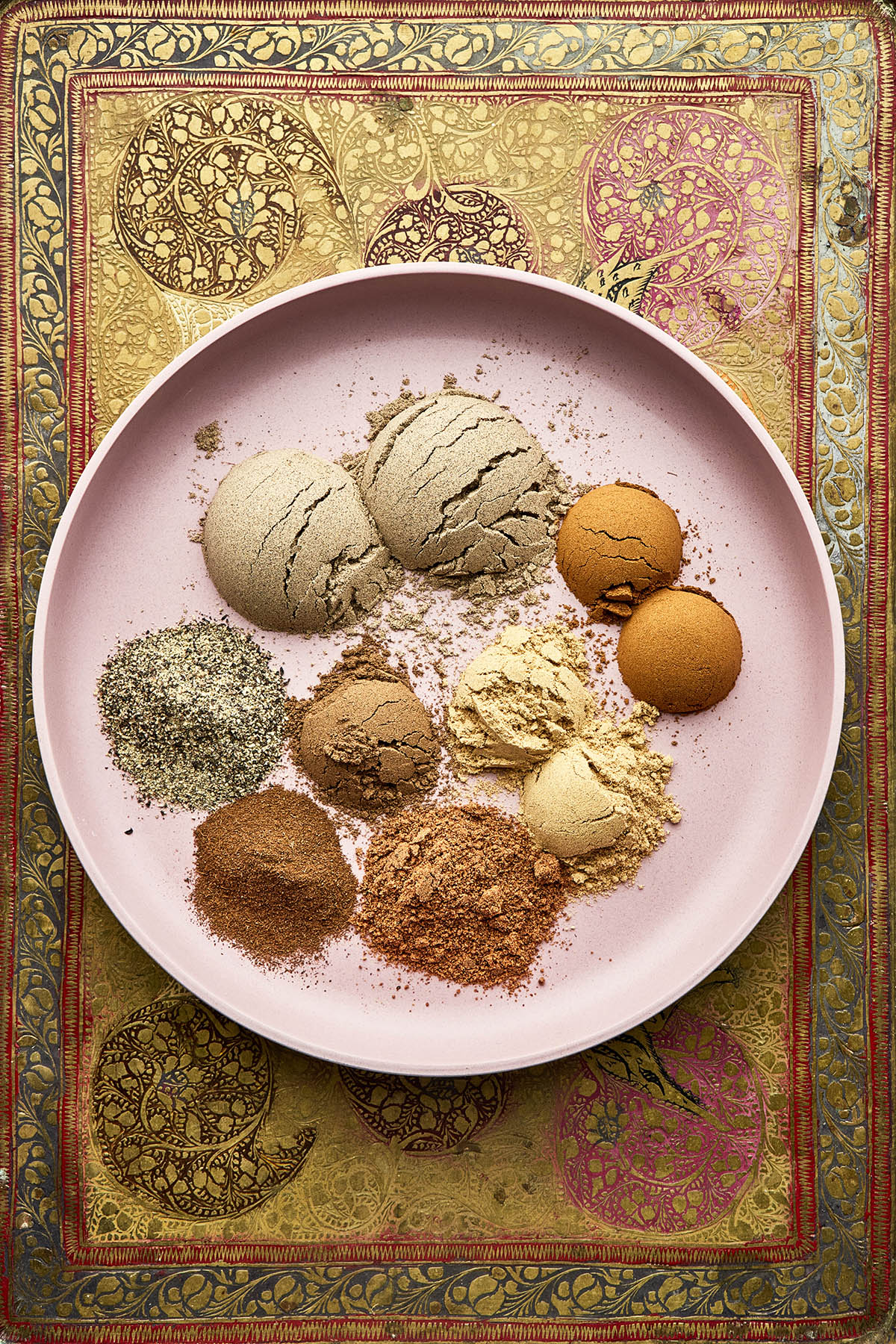
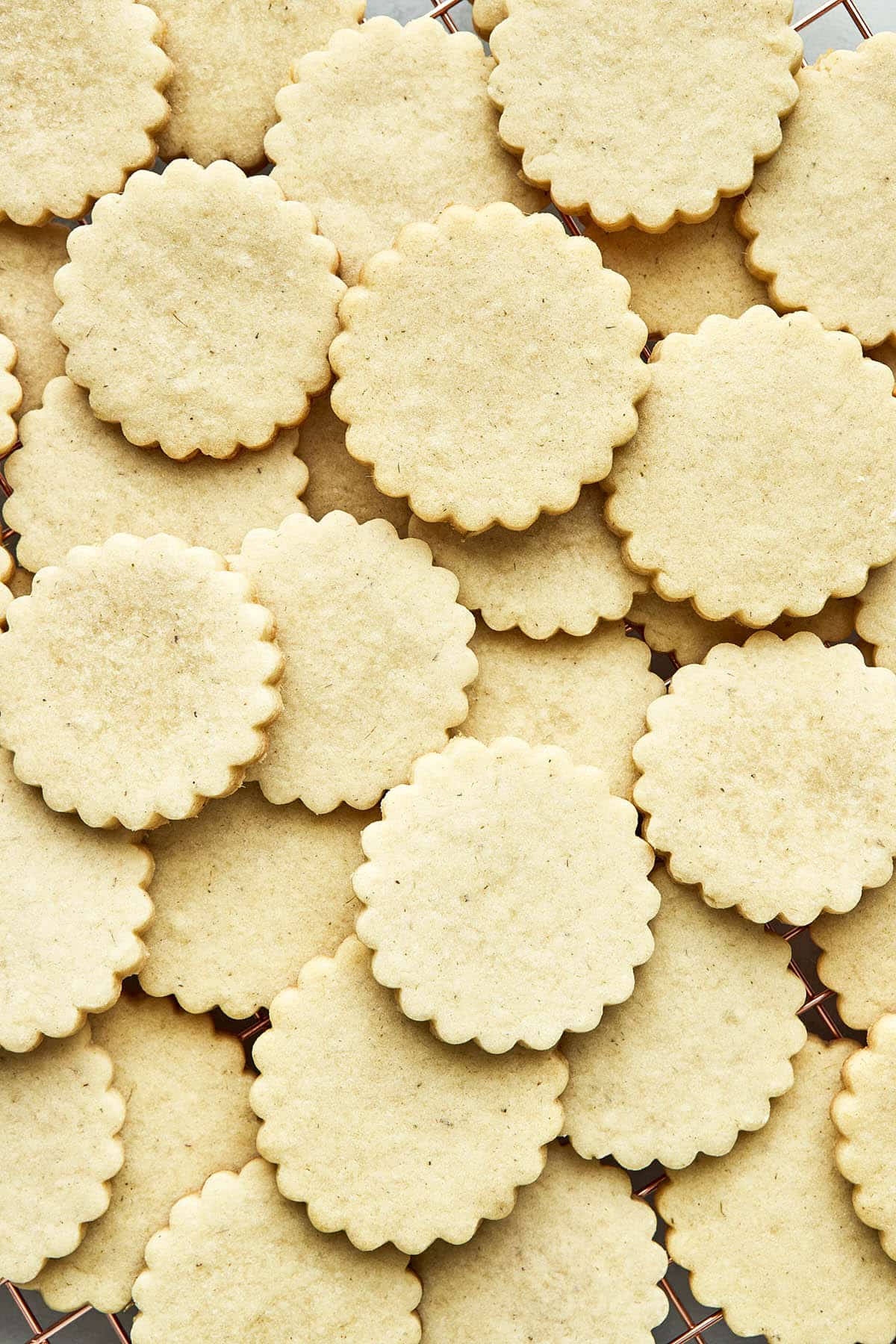
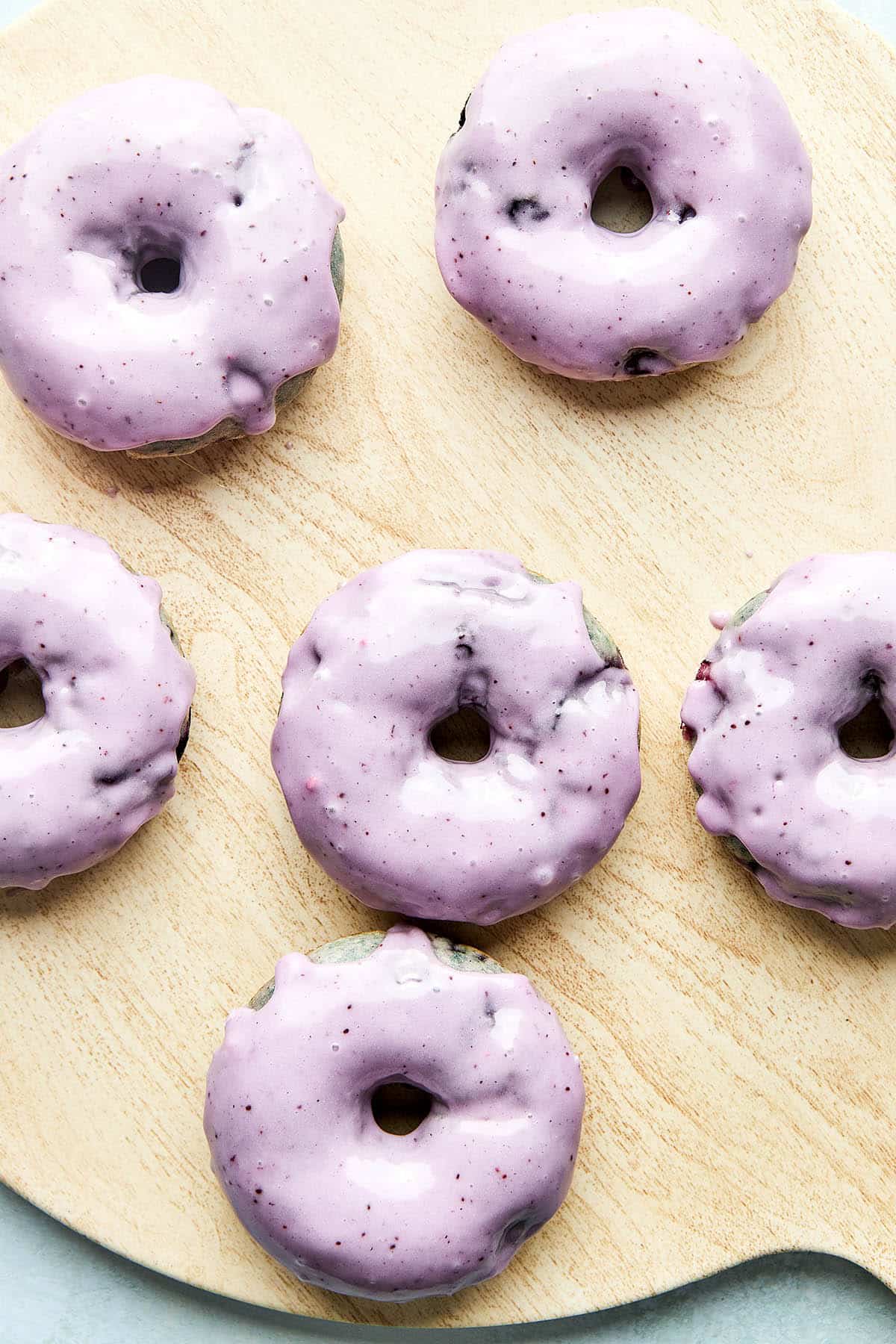
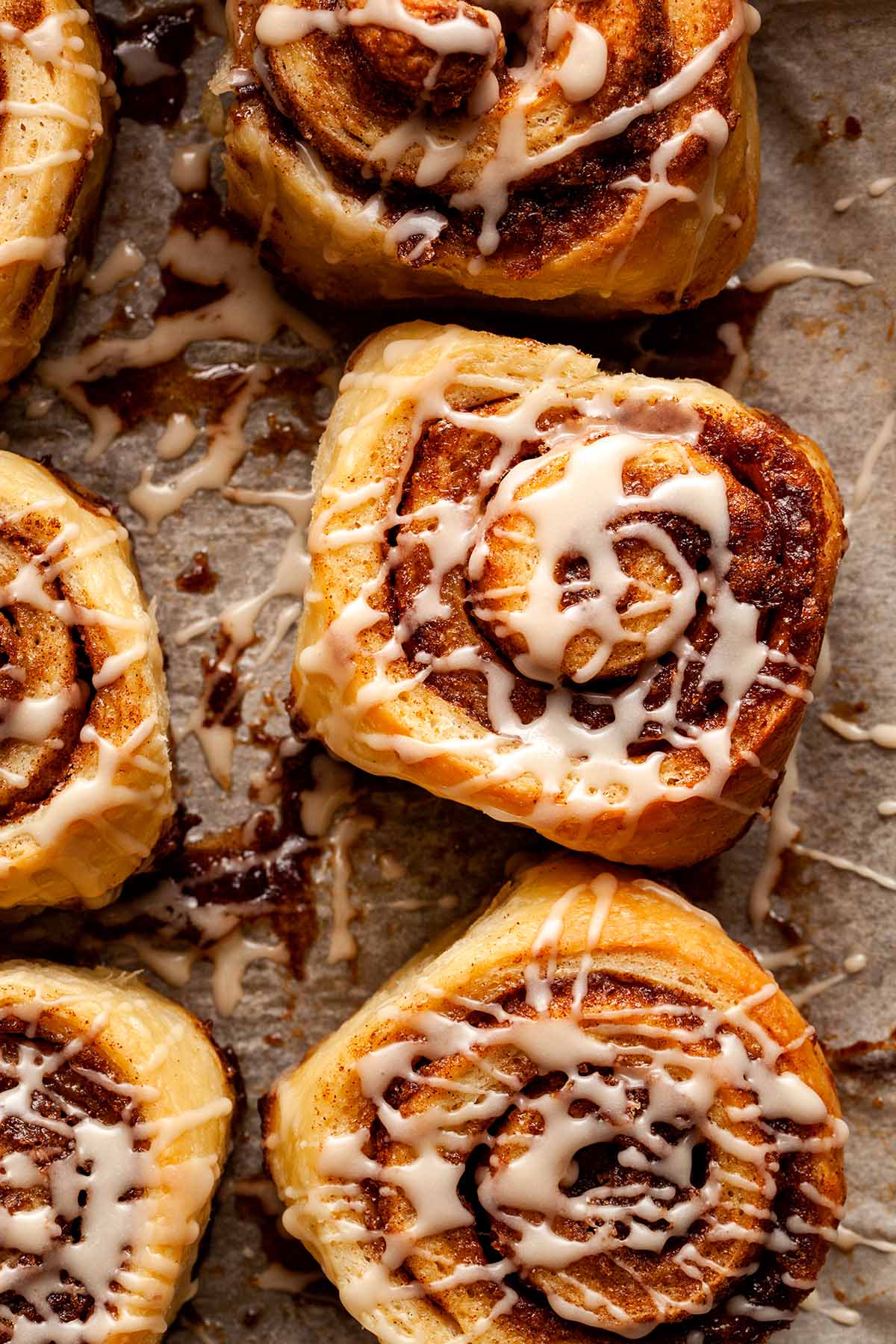
What state should the butter be in? Softened, melted?
I'm in the middle of trying out different frostings too! Looking for that perfect one that doesn't take forever, doesn't taste like plastic, but still holds shapes beautifully. I'm sure I'll be blogging about it, so feel free to check it out next week. (I'll link back to your recipe when I post about it.) Do you think the frosted cake/cupcakes should be stored in the fridge?
for the round domes you got on ur cupcakes, did u set at 350 and when u put them in, dropped it to 325? Or was it 325 the whole time? thanks. I'm trying to get my cupcakes to have the dome and getting the flat tops =( thanks!
I have been searching for forever for a buttercream frosting that tastes great but also keeps it's shape after I pipe it onto cakes/cupcakes. This recipe with the Crisco substitution is perfect. I adjusted the amount of ingredients slightly to appeal to my own tastebuds, but the basic recipe is pretty darn close to perfect. The little cupcake trick at the end was a great help, too. My cupcakes came out with a nice dome on top that was ideal for piping frosting. Everyone loved the cupcakes, and I have this post to thank!
For the few questions I see above on this page:
I used butter straight out of the fridge, but room temperature butter would have made mixing easier. Chilled butter left me mixing for more than 2-3 minutes, which the article says not to do. You don't want to use melted butter.
For the oven temp question, I preheated the oven to 350 and then reduced it to 325 when I put the cupcakes in the oven. Worked like a charm.
what recipe do you use for your vanilla cupcakes? I can't seem to find a good one.
@Molly – the butter should be room temperature. I like to soften mine a little further in the microwave because we keep our house pretty cool.
@Ani – I don't put mine in the fridge. They also don't seem to last very long around here 🙂
@Bridget – if you read the post you'll see that I started at 350 and then realized that the temp was supposed to be 325 so I lowered it for the second batch.
@Kristen – I always use room temperature butter for baking and frostings unless the recipe states otherwise.
@Ashley – I made these cupcakes tonight – http://www.cupcakeproject.com/2011/09/ultimate-vanilla-cupcake-test-baked-by.html – and they were great! Light and fluffy with the perfect amount of vanilla flavour. I didn't have any sour cream in my fridge so I used 35% Whipping Cream (aka Heavy Cream) instead and they turned out fine.
This is my "go-to" Vanilla Buttercream for all the cupcakes I bake. I've used the recipe for work gathering, birthdays, and fundraisers all with rave reviews. People think the frosting was whipped forever because it's so smooth and delicious. In my opinion it's the best tasting vanilla buttercream frosting-not too sweet with just the right amount of butter flavor (even with the shortening substitution). I am going to attempt to add some raspberry preserves or a raspberry reduction to this recipe for an upcoming birthday. I tried out two other raspberry recipes and they haven't been good. I love this recipe so much I'm going to try and MAKE IT INTO my "go-to" raspberry buttercream! Haha! I'll let you guys know if it works out.
Thank you so much Kelly for sharing this recipe, love it!!
How did adding the raspberry puree work out?
Thanks so much! I feel the same way about it – it's my #1 go to. Good luck with the raspberry!!
I was wondering whether this buttercream crust enough for the "viva paper towel" method of smoothing for cakes. Do you know?
Hi Hillery – I'm really not sure but I can tell you, if you have extra, you can just freeze it! I've done it before – when it thaws you just re-whip a bit 🙂
Is icing sugar regular sugar or powdered sugar?
Hi Kim – it's powdered sugar. I've always heard it called icing sugar in Nova Scotia.
This is so great! I reduced the time and WOW did those cupcakes pop up!! So amazing!
Does this mean to preheat the oven to 350, and then reduce it to 325 when you put the cupcakes in? Thanks! 🙂
I was wondering how many cupcakes you can frost with this recipe?
With this buttervream recipe, can you leave it unrefridgerated once you ice the cake?
This icing had a funky taste. My husband thinks so too. It also melts very easily and turns watery looking. The temperature is in the 40’s. I do not recommend. I had to toss it out and all that expensive butter was wasted.
Hey there still confused read through all the comments still not getting it so in I shoild start by preeheating the oven for 350 then once the cake is in I should reduce it to 325 to achieve a domed cup cake right and does this method work with ne recipe or does it have to b the ina gathen recipe if so would you b able to give me the recie in grams and where im at I cnt find crisco can I use normal butter to achieve the fluffy butter cream truly appreciate uou effort n id b over the moon if I can achieve the dome look in my cupcakes thanks a ton